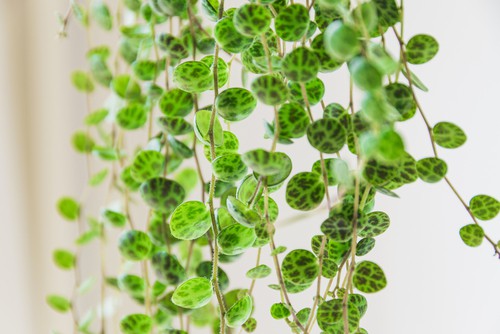Peperomia is a popular houseplant with a variety of attractive foliage and easy-to-care-for nature. However, one common problem that many peperomia plant owners face is the leaves turning brown. Brown leaves can be a sign of stress or damage to the plant, and it is essential to identify the cause to prevent further damage.
Understanding peperomia plants is crucial to diagnose the cause of brown leaves. Peperomia plants are native to tropical and subtropical regions of the world and are known for their fleshy, succulent-like leaves.
These plants require medium to bright light, well-draining soil, and moderate watering. Overwatering or underwatering can cause stress to the plant, leading to brown leaves. In addition, environmental factors such as temperature, humidity, and airflow can also affect the health of the plant.
Common causes of peperomia leaves turning brown include pest infestation, root rot, environmental stress, and nutrient deficiencies. Symptoms and diagnosis of these causes can vary, and it is essential to observe the plant carefully to identify the problem.
Prevention and treatment of brown leaves depend on the cause and may include adjusting watering frequency, providing appropriate fertilization, and treating pests and diseases.
Key Takeaways on Peperomia Leaves Turning Brown
- Peperomia leaves turning brown can be a sign of stress or damage to the plant.
- Common causes of brown leaves include pest infestation, root rot, environmental stress, and nutrient deficiencies.
- Prevention and treatment of brown leaves depend on the cause and may include adjusting watering frequency, providing appropriate fertilization, and treating pests and diseases.
Also don’t miss:
Understanding Peperomia
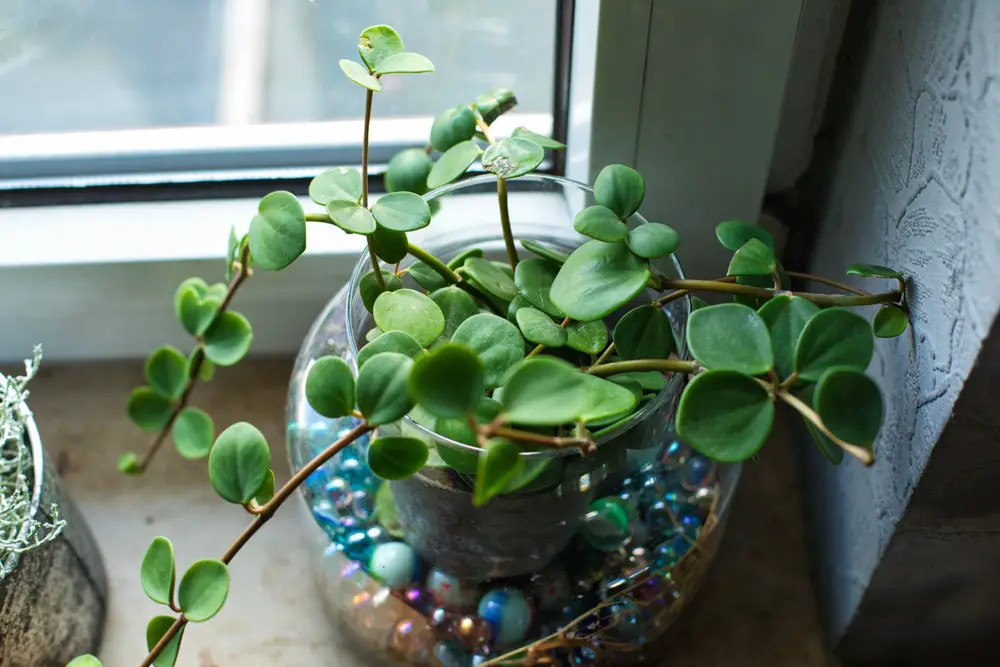
Peperomia is a tropical and subtropical semi-succulent houseplant that is popular for its attractive foliage. The plant is native to Central and South America and belongs to the family Piperaceae.
There are over 1,000 varieties of Peperomia plants, and they come in different shapes, sizes, and colors, making them a popular choice for indoor gardening.
Peperomia plants are easy to care for and require minimal maintenance. They thrive in bright, indirect light and prefer well-draining soil. They are sensitive to overwatering, and it is essential to allow the soil to dry out between watering. Overwatering can lead to root rot, which can cause the leaves to turn brown and fall off.
Peperomia plants are known for their fleshy leaves, which can store water. The leaves come in different shapes, including heart-shaped, oval, and lanceolate. Some varieties have variegated leaves, while others have solid colors.
The leaves of Peperomia plants can turn brown due to various reasons, including environmental stress, pest infestation, nutrient deficiencies, and overwatering.
Peperomia Leaves Turning Brown – 5 Common Problems
Peperomia is a popular houseplant that is known for its attractive foliage and low maintenance requirements. However, like any other plant, it can suffer from various problems that can cause its leaves to turn brown. Here are some of the common causes of brown leaves on peperomia:
1. Overwatering and Underwatering
One of the primary reasons for peperomia leaves turning brown is overwatering or underwatering. Peperomia plants require a well-draining soil mix that allows excess water to escape, preventing root rot.
On the other hand, underwatering can cause the leaves to dry out and turn brown. It is important to water the plant only when needed and to ensure that the soil is moist but not waterlogged.
2. Light and Temperature Issues
Peperomia plants require medium to bright light to maintain their colors. Insufficient light can cause the leaves to turn brown and lose their vibrancy.
Additionally, extreme temperatures can also cause stress to the plant, leading to brown leaves. It is important to keep the plant in a location that receives adequate light and to avoid exposing it to extreme temperatures.
3. Soil and Drainage Problems
Peperomia plants require a well-draining soil mix that allows excess water to escape, preventing root rot. Poor drainage and soil moisture can cause the roots to rot, leading to brown leaves and stems. It is important to ensure that the soil is well-draining and that excess water is allowed to escape.
4. Pest Infestation
A pest infestation can also cause brown spots on peperomia leaves. Common pests that can infest peperomia plants include spider mites, mealybugs, and scale insects. It is important to inspect the plant regularly for signs of pest infestation and to take appropriate measures to control them.
5. Disease and Fungal Infections
Peperomia plants can also suffer from various diseases and fungal infections that can cause brown leaves. Common diseases include leaf spot, powdery mildew, and root rot. It is important to identify the problem early and take appropriate measures to control it.
Symptoms and Diagnosis
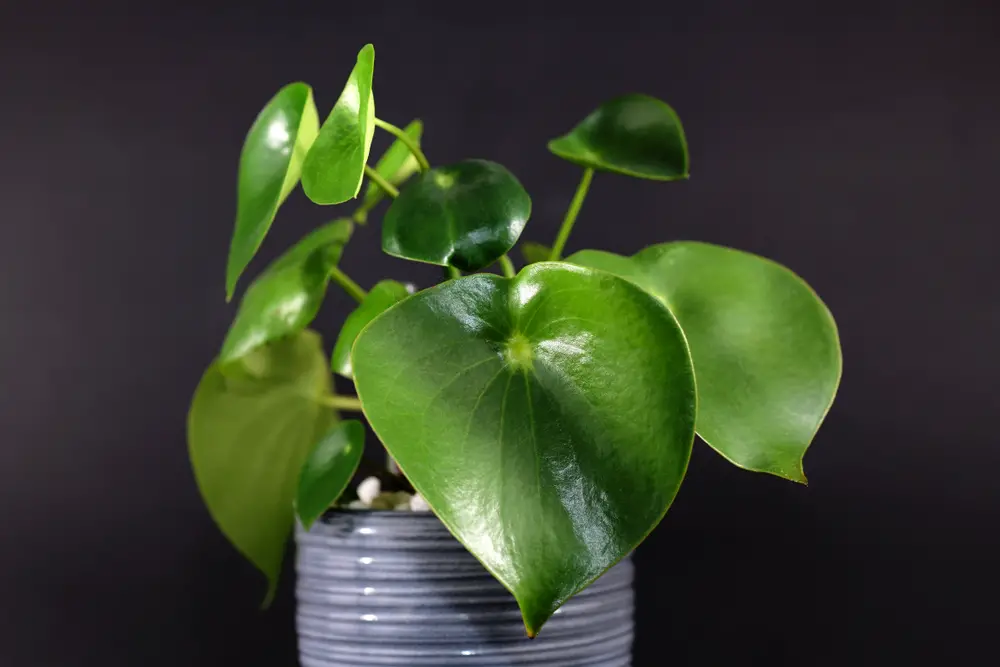
Peperomia plants are known for their attractive foliage and ease of care. However, they are prone to a few issues that can cause their leaves to turn brown and fall off. Here are some symptoms to look out for and how to diagnose the problem.
1. Identifying Overwatering
Overwatering is one of the most common causes of brown leaves on peperomia plants. Symptoms of overwatering include wilting, stunted growth, and brown spots on leaves. To diagnose overwatering, check the soil moisture level by sticking your finger into the soil. If the soil is damp or wet, the plant is likely being overwatered.
To fix overwatering, reduce the frequency of watering and allow the soil to dry out between waterings. Ensure that the pot has proper drainage to prevent water from accumulating in the soil.
2. Recognizing Light and Temperature Stress
Peperomia plants require medium to bright light to maintain their colors. If they are not getting enough light, their leaves may turn brown and fall off. Temperature stress can also cause brown leaves. Peperomia plants prefer warm temperatures between 60-80°F (15-27°C).
To diagnose light and temperature stress, check the plant’s location and the temperature of the room. If the plant is not getting enough light, move it to a brighter location. If the temperature is too low, move it to a warmer location.
3. Detecting Soil and Drainage Issues
Poor soil quality and drainage issues can cause brown leaves on peperomia plants. If the soil is too compact or heavy, it can retain too much moisture and cause root rot.
To diagnose soil and drainage issues, check the soil quality and drainage by gently removing the plant from the pot. If the soil is compact and heavy, repot the plant in a well-draining soil mix. Ensure that the pot has proper drainage holes to allow excess water to escape.
4. Spotting Pest Infestations
Pest infestations can also cause brown leaves on peperomia plants. Common pests include spider mites, mealybugs, and scale insects. Infested leaves may have webbing, a sticky residue, or visible insects.
To diagnose pest infestations, inspect the plant’s leaves and stems for signs of pests. Use an insecticidal soap or neem oil to treat the plant and prevent further infestations.
5. Diagnosing Diseases and Fungal Infections
Diseases and fungal infections can cause brown spots on leaves and infected leaves to fall off. Common diseases include leaf spot disease and powdery mildew.
To diagnose diseases and fungal infections, inspect the plant’s leaves for brown spots or a powdery white substance. Remove infected leaves and treat the plant with a fungicide to prevent further spread of the disease.
Prevention and Treatment
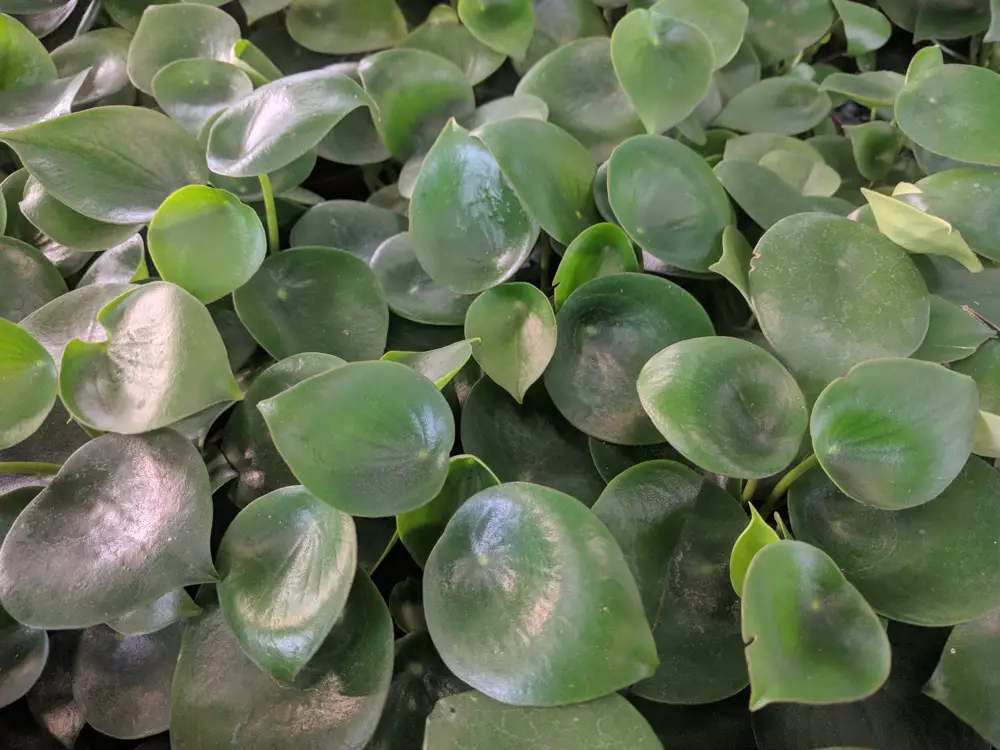
Peperomia plants are generally easy to care for, but they can be susceptible to a variety of issues, including browning of the leaves. Fortunately, there are several measures that can be taken to prevent and treat this problem.
Addressing Overwatering and Underwatering
Overwatering is one of the most common causes of browning in Peperomia plants. To prevent this issue, it is important to water the plant only when the topsoil layer has dried up. It is also important to ensure that the pot has adequate drainage holes to allow excess water to escape.
On the other hand, underwatering can also lead to browning. If the plant is not receiving enough water, the leaves will start to wilt and turn brown. To prevent this issue, make sure to water the plant regularly, but not too frequently.
Managing Light and Temperature
Peperomia plants require bright, indirect light to thrive. Direct sunlight can scorch the leaves and cause browning. It is also important to ensure that the plant is kept in a temperature range of 65-75°F (18-24°C) and in a location with moderate humidity levels.
Improving Soil and Drainage
Peperomia plants require well-draining soil to prevent waterlogging and root rot. A healthy soil mix can be achieved by mixing regular potting soil with vermiculite or orchid potting medium. It is also important to ensure that the pot has adequate drainage holes to allow excess water to escape.
Controlling Pest Infestations
Pest infestations, such as fungus gnats, red spider mites, and aphids, can also cause browning of the leaves. To prevent and treat these infestations, isolate the plant and treat it with an appropriate insecticide or pesticide.
Treating Diseases and Fungal Infections
Diseases and fungal infections, such as Cercospora leaf spot, Phyllosticta leaf spot, Rhizoctonia leaf spot, and Peperomia ringspot virus, can also cause browning of the leaves.
To prevent and treat these issues, it is important to maintain healthy growing conditions, including proper watering habits, adequate light requirements, and a healthy soil mix. If the plant is already infected, it may be necessary to prune affected leaves and repot the plant in sterile soil.
Frequently Asked Questions
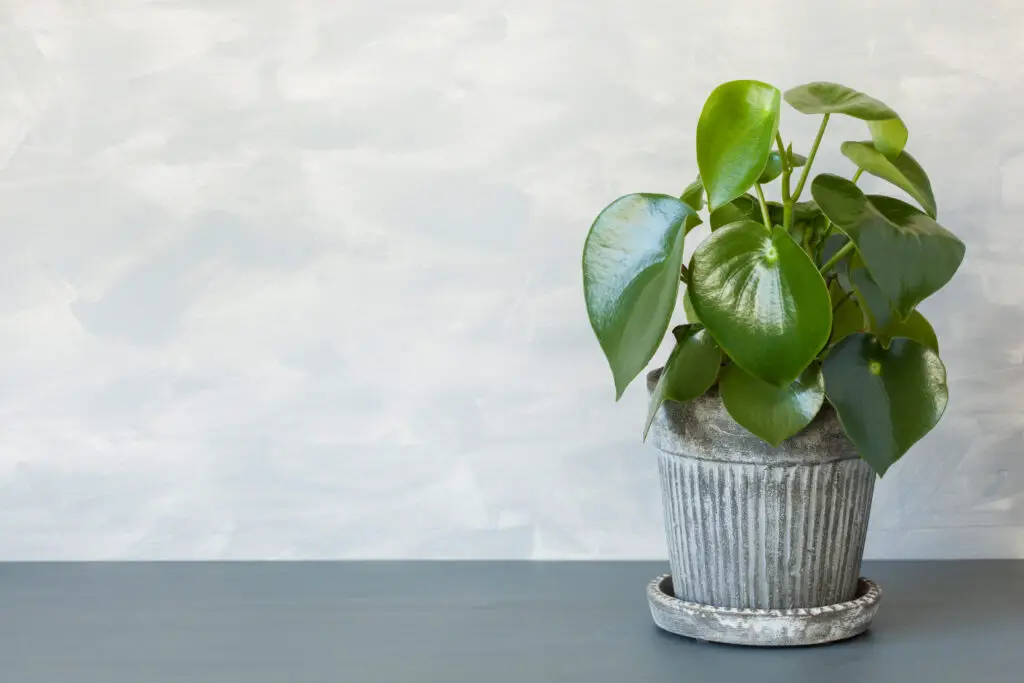
How do you prevent peperomia leaves from turning brown?
To prevent peperomia leaves from turning brown, it is important to ensure that the plant is not overwatered or exposed to direct sunlight for extended periods.
Peperomia plants thrive in medium to bright light, but too much direct sunlight can cause the leaves to burn and turn brown. It is also important to avoid over-fertilizing the plant, as this can lead to salt buildup in the soil, which can cause the leaves to turn brown.
How do you fix brown spots on peperomia leaves?
To fix brown spots on peperomia leaves, it is important to identify the underlying cause of the problem. If the brown spots are caused by overwatering, reducing the frequency and amount of watering can help.
If the brown spots are caused by pests or diseases, treating the plant with an appropriate pesticide or fungicide can help. If the brown spots are caused by nutrient deficiencies, fertilizing the plant with a balanced fertilizer can help.
What causes brown edges on peperomia leaves?
Brown edges on peperomia leaves can be caused by a variety of factors, including overwatering, underwatering, low humidity, and exposure to cold temperatures.
To prevent brown edges on peperomia leaves, it is important to ensure that the plant is watered properly, kept in a humid environment, and protected from cold drafts.
How do you treat brown leaves on peperomia?
To treat brown leaves on peperomia, it is important to identify the underlying cause of the problem. If the brown leaves are caused by overwatering, reducing the frequency and amount of watering can help.
If the brown leaves are caused by pests or diseases, treating the plant with an appropriate pesticide or fungicide can help. If the brown leaves are caused by nutrient deficiencies, fertilizing the plant with a balanced fertilizer can help.
Why are my peperomia leaves turning brown and crispy?
Peperomia leaves can turn brown and crispy due to a variety of factors, including overwatering, underwatering, exposure to direct sunlight, and low humidity.
To prevent peperomia leaves from turning brown and crispy, it is important to ensure that the plant is watered properly, kept in a humid environment, and protected from direct sunlight.
How do you revive a peperomia with brown leaves?
To revive a peperomia with brown leaves, it is important to identify the underlying cause of the problem and address it accordingly. If the brown leaves are caused by overwatering, reducing the frequency and amount of watering can help.
If the brown leaves are caused by pests or diseases, treating the plant with an appropriate pesticide or fungicide can help. If the brown leaves are caused by nutrient deficiencies, fertilizing the plant with a balanced fertilizer can help.
It may also be necessary to prune away any severely damaged leaves to encourage new growth.

Hey, I’m Lisa and I’ve been an avid gardener for over 30 years. I love writing, talking and living in the garden! Feel free to connect with me on my socials below

